
I was just reading a piece in the Boston Globe titled, Hub police show no gain in solving homicides. There’s a lot I could say, but I’m caught up in the inauguration excitement and not very focused.
A few things in the piece jumped out at me. “He beefed up the unit to 25 detectives, replaced the deputy superintendent in charge, added two more detectives to the one-man cold case squad, and instructed investigators to meet regularly with victims’ families so they could build relationships that might result in leads.” They talking about Police Commissioner Edward Davis, pictured here (and I got the picture from the Globe piece, it was taken by Dominic Chavez). Very very very good changes, but their Cold Case squad had only one detective, and now has only three? If they’re having trouble clearing cases that means the cold cases are increasing.
The other thing that jumped out at me was this: “Nationally, clearance rates fell sharply from 92 percent in 1960 to 61 percent in 2006, according to a 2008 report by Southeastern Louisiana University.”
I meant to post about this earlier, with respect to the clearance rates the NYPD shows for 1960 and for the next ten years or so, which are as high as the ones mentioned there. I don’t believe them. I don’t think ten years later (and to this day) they suddenly got bad at solving murders, or any one of a number of factors that are put forward to explain why they went from having only 10% or so unsolved murders yearly during the 60’s to 35% – 45% unsolved murders now. (Just think of all the tools we have now that we didn’t have then.) There are various things contributing to lower clearance rates, but bottomline I don’t believe they were ever that high. I think the main reason the numbers are what they are now compared to 1960 is that they have just gotten a little more honest about them over the years.
Further, I’m skeptical overall about clearance rates in general. For instance, homicides are cleared when they make an arrest. If that arrest does not lead to a conviction they don’t go back and adjust the numbers. What if they had the wrong guy? So we don’t really know how many unsolved murders we’ve got for each year. We only know how many never led to an arrest. If they say they cleared 65% in 1990, for instance, there isn’t a second figure which communicates the outcome of those cases.
Anyway, I read the article because I actually felt compassion for that commissioner and the Boston detectives. I learned everything I could about solving murders and why some don’t get solved, and the main thing I learned: solving murder is hard. When I offered suggestions in my book it’s not like I came up with a lot (more training in things like DNA, blood spatter/splatter, how to use the internet to find information and people, etc.). But I think it also comes down to talented, hard-working people in any area are hard to find. Lots of people play violin for instance, and lots of them practice all the time, nonetheless only a small number are gifted. The same is true with great detectives. It’s not like they’re a dime a dozen.





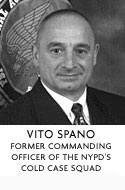
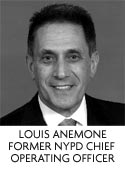
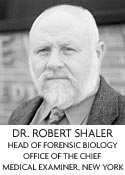

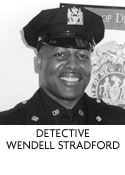
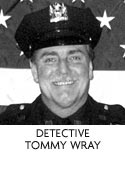

5 responses so far ↓
1 Eric // Jan 21, 2009 at 9:00 pm
Peter Gourevitch’s book “A Cold Case” has an excellent description of how a cold case was ‘signed off’ by a detective on the (incorrect)assumption that the suspect was dead. The case would have been ‘cleared’ which is not the same as ‘solved’. The older clearance rates may have been inflated at the time, or ‘improved’ when the case files were reviewed.
2 slamdunk // Jan 22, 2009 at 2:23 pm
Good observations–I agree with your thoughts and concerns with the homicide stats and that better numbers have contributed to the difference in clearance rates.
I would also add that less cohesive communities, the change in the evidence required to convict (from the 60s to today), and the impact of drugs are also relevant factors.
In studying homicide clearances between 1960-2002, Ken Litwin and Yili Xu’s research indicated that primary factors influencing the decline in homicide clearances could be attributed to:
1) significant increase in the number of minority victims (less cooperation from minority communities and/or fewer resources dedicated to solving the cases of the less powerful–depending on your world view),
2) a 196% increase in the number of bodies recovered from vehicles (concealed crime scenes),
3) a 14% increase in cases where firearms were used (less evidence), and
4) 13% increase in male victims (fewer attachments).
3 Stacy Horn // Jan 23, 2009 at 9:53 am
Eric, yeah. I should have included a brief description of all the ways to clear a case. Clearing a case because the suspect is dead goes under a category called “exceptional clearance.”
Slamdunk, yeah, I looked at all these factors, too, and yes they contribute to declining clearance rates. I’m referring to early clearance rates. I don’t believe in 1960 that they were really clearing close to 92% of their cases.
4 Eric // Jan 26, 2009 at 8:10 pm
I’m curious about the types of unsolved cases. There’s a difference between a case with an obvious suspect but insufficient evidence and a genuine whodunit without leads, and the reasons for an unsolved case, such as reluctant/intimidated witnesses, inept investigation, missing evidence, and so on. One of the reasons for having cold case squads should be to identify the reasons that cases get solved or not, and to develop ways of avoiding failed investigations.
Is there any chance that the stimulus spending frenzy will include anything useful, such as a return of the ‘Clinton cop’ program, federal money for cold case investigations, or money for more and better testing of rape kits and other forensic evidence? I see Citibank just bought a $50 million jet that seats 12 people with some of their stimulus money. That would pay for a lot of overtime.
5 Stacy Horn // Jan 29, 2009 at 2:59 pm
Good question. There’s so many ways to go with it. Like to students/future law enforcement personnel to become better educated about forensic science, etc.
Leave a Comment